Menus
- Epochal motorcycles
- Epochal motorcycles
- Honda CBR 900 RR Fireblade
- Ducati 916
- Yamaha YZF-R1
- Suzuki GSX-R 1000
- Technical specifications
- Ducati 916
- Power / torque diagram
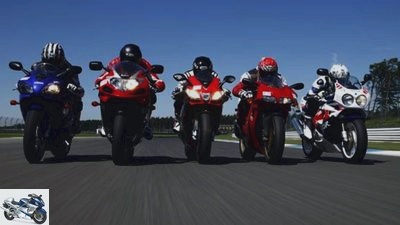
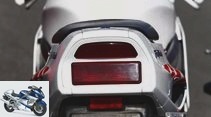
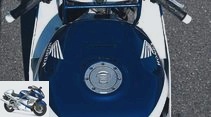
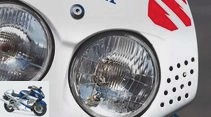
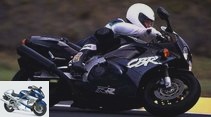
9 photos
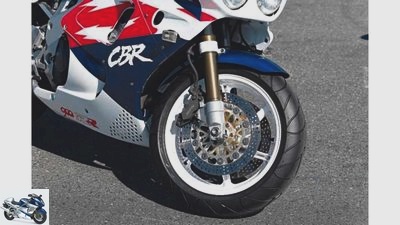
1/9
Honda CBR 900 RR Fireblade: A nuisance then as now: The idiosyncratic 16-inch front wheel dramatically worsens handling with worn tires.
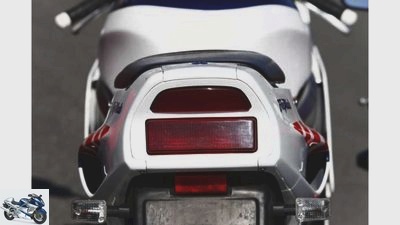
2/9
Honda CBR 900 RR Fireblade: Then as now, the Honda is considered a lamb-like racer. She never wants to be overwhelmed, but she can reach for it terribly if need be.
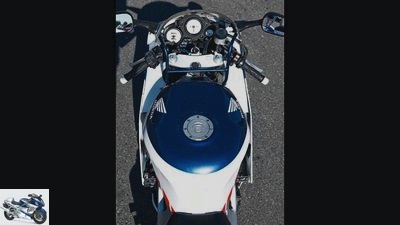
3/9
Honda CBR 900 RR Fireblade: The wide fuel barrel and the analog cockpit are relics of the past.
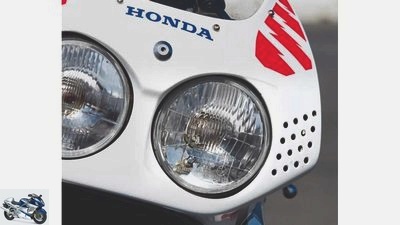
4/9
Honda CBR 900 RR Fireblade: The holes in the fairing are a thing of the past.
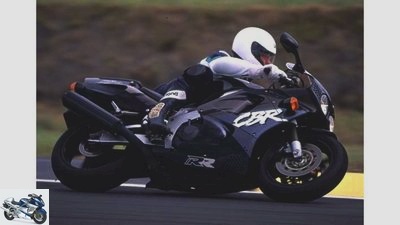
5/9
Honda CBR 900 RR Fireblade: The now chubby-looking CBR 900 RR was in 1992 with its 207 kilos roadworthy, sheer madness in terms of lightweight construction.
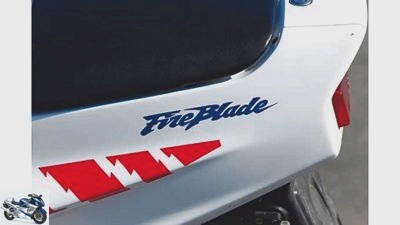
6/9
Honda CBR 900 RR Fireblade: Already the first generation, type SC 28, sold 9,734 times in Germany until 1995.
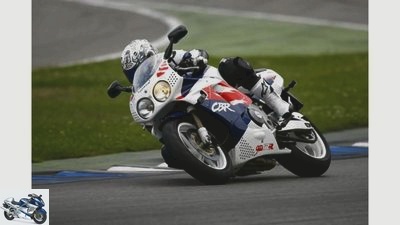
7/9
Honda CBR 900 RR Fireblade: The fire blade was unleashed on the overweight big bike world in 1992.
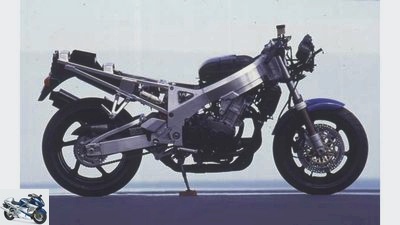
8/9
Honda CBR 900 RR Fireblade: After such a long time, we remember 1992 with comforting shudders.
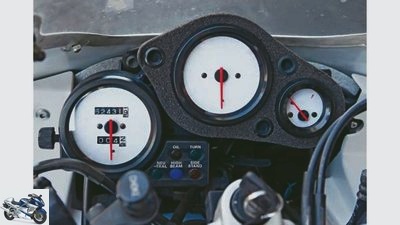
9/9
Honda CBR 900 RR Fireblade cockpit
Honda CBR 900 RR Fireblade SC 28, Ducati 916 SPO, Yamaha YZF-R1 RN01, Suzuki GSX-R 1000 K1 and Aprilia RSV4 Factory
Epochal motorcycles
Content of
"Epochal motorcycles" sounds a bit like a museum and does not do justice to the five aspirants. Let’s agree "Big hits", because Honda Fireblade, Ducati 916, Yamaha YZF-R1 and Suzuki GSX-R 1000 were such a hit in their time that the competitors lost their sight and hearing. And the current Aprilia RSV4 Factory has what it takes to follow in their footsteps.
Epochal motorcycles
The other night in front of the laptop. Accompanied by the rain drumming on the living room window, eager fingers dance across the keyboard. No, no hard-working horsepower editor acts here and bravely writes his test stories, here is a hunter on the move. Restlessly roams the online portals of the World Wide Web on which motorcycles are offered; regional, nationwide, worldwide. On the prowl, because somehow something new and old has to go back into the garage. Only what? The real highlights of motorcycle evolution are priceless for ordinary people. Honda RC 30, Yamaha OW-01 or even its successor RC 45 or R7 are simply too expensive. The Kawasaki GPZ 900 R or an 84er Suzuki GSX-R 750 are now really old iron and have also disappeared in trustworthy hands and locked garages.
All that remains for the hunter is to sift through the recent past. It hits him like lightning. Back then, on a Kawasaki Zephyr 750, fully disguised super athletes were out of budget. But memories of the original Fireblade, the classic Italian Diva 916 and the first YZF-R1 are awakened. Wow what hammers! 2001 still topped by the first Kilo-Gixxer, as the GSX-R 1000 was later called. And thanks to good sales figures, one or the other can be found at realistic prices. Bargains are rare, but still possible. It remains to be seen whether the Aprilia RSV4 Factory can keep up with these violent impacts in the future. With an independent character and extremely sporty genes, she would have what it takes to be in the "Hall of Fame" the super athlete move in.
Honda CBR 900 RR Fireblade
Honda CBR 900 RR Fireblade.
After such a long time, we remember 1992 with a pleasant creep. The world of athletes was a different one back then. Honda had just outclassed the 600 world with the first CBR 600 F with real 100 hp, when the next blow came with the big bikes. The fire blade aka Honda CBR 900 RR was unleashed on the overweight big bike world. Their opponents were all fat carp, because a Suzuki GSX-R 1100 W weighed 259 kilograms, a Kawa ZZ-R 1100 even 271 and the Yamaha FZR 1000 stood on its rubbers with 242 kilograms. And then the blade! Sure, only with 893 cubic meters and clearly, only with 128 hp – but also of course, only with a full tank of 207 kg! This caused the enemy’s oil to curdle in terror in the engines.
At the presentation in Philipp Island, Australia in February 1992, PS editor Ralf Schneider confirmed the blackest nightmares of the competition, as the Fireblade attested one thing above all else with the exception of a pronounced righting moment when braking in an inclined position: pure driving pleasure! "A Philipp Island newcomer needs at least ten laps to find his way reasonably safely. The program also includes crests, hairpin bends and dog bends as well as a steep descent. A fast lap therefore degrades every roller coaster to a sleeping pill." With the Fireblade, Schneider mastered the demands of the piste without any problems, because then as now the Honda is considered a lamb-like racer. She never wants to be overwhelmed, but she can pull too hard if she has to.
From today’s perspective, that has not changed, and the 42161 blades sold by the end of 2007 are impressive testimony to this. The tested 1992 fire blade by PS reader Michael Philipp does not glow really hot with its 60,000 kilometers, but the former fire can still be guessed well. Especially on new tires, it opens up freely and can be cheerfully peppered into the corners from left to right. The ergonomics are of course old-fashioned, the fat tank as wide as a barrel and just as high, but there is a certain charm to romping around on the country road with the high-flyer from back then. Even the 125 hp are easily enough for this, as their 207 kilograms do not have to hide behind the mirror even today. A really big hit that chief developer Tadao Baba and his men launched an unbelievable 16 years ago.
Ducati 916
Photo: fact




7th photos
Pictures: Honda CBR 900 RR Fireblade SC 28, Ducati 916 SPO, Yamaha YZF-R1 RN01, Suzuki GSX-R 1000 K1 and Aprilia RSV4 Factory
To home page
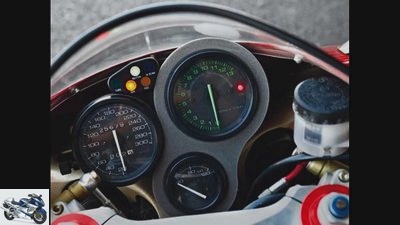
fact
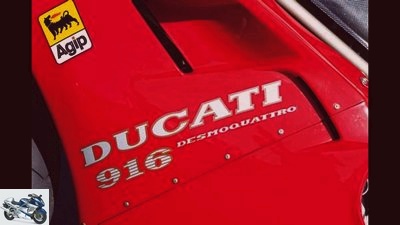
fact
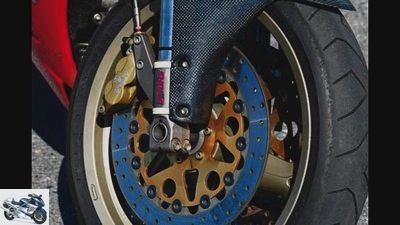
fact
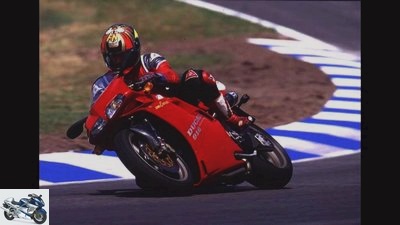
fact
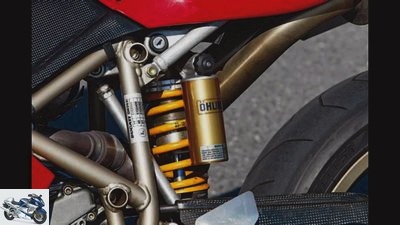
fact
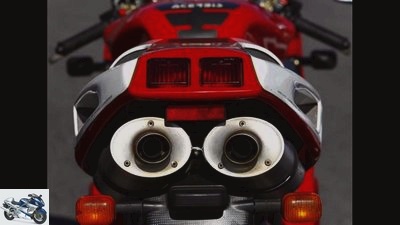
fact
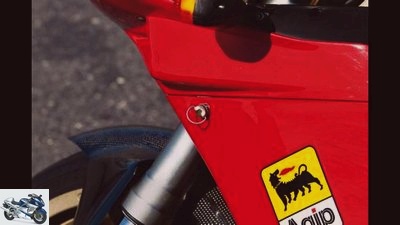
fact
Ducati 916 at its presentation in Misano in February 1994 and danced with the "fiery red partner" one "spirited slope dance". The thunderous echo of the 916 can still be heard, even if it is now very cautious. Since the hapless and mocked ugly duckling 999 was replaced by the 1098, things are slowly getting quieter around the "Godfather of Quattro Valvole-Desmo". It seems logical that such a long reverberation must have a correspondingly heavy impact as the root. The 916 was not only the optical highlight, but technically it also took a radical path for Twins. Designed for victory in the Superbike World Championship, every day-to-day comfort was ergonomically dispensed with, the tank in the knee area was kept very narrow, the pegs high and the handlebars very low.
The grace of the time in the red dress kept what its sporting goal promised. Took its toll on the normal driver and rewarded him profusely on the slopes. Even in Misano, PS tester Pfeiffer was very impressed by the handiness and neutrality with which the 916 mastered the corners of the tricky racetrack. In the first test shortly afterwards in Hockenheim, Baden, he even punched 1.14.3 minutes into the asphalt of the small course. A truly remarkable achievement, because the Ducati was already on a 190/50 rear tire that was simply too wide for its 5.50-inch rim. An evil that would continue until the end of the 916/996/998 era.
The 1995 916 SPO by PS reader Peter Conrad, made available for photography, felt right at home on the mounted Michelin Pilot Power 2CT in 120/70 and 180/55. Indeed, this tire helps the 916 get some of theirs "concreted" To take a straight line and to make them more docile at the turn-in point. From today’s point of view, such a 916 is a stubborn goat that wants to be pushed into the corner with force in order to then lie all the more sat down in an inclined position. The Ducati era of banking stability definitely began with the red diva. If you want to call this driving experience and above all this design icon your own, you should squint at the year of construction from 1999 and land a 996. Thanks to lighter wheels, it is a bit more manageable, also significantly stronger and also more reliable – with the same look, mind you.
If you want the absolute original, i.e. an early 916, you should pay attention to the charge regulator and either look for an extremely low mileage or a special model. The driven SPO, for example, is a mixture of standard engine (no sharp camshafts etc.) and SP chassis (Ohlins shock absorber, cast brake discs and single humps). And with only 199 copies built, it is rarer than one, for example "Senna". In total, a total of 3,080 916s were sold in Germany between 1994 and 1998, and a further 4831 996/998 between 1999 and 2003. So there is plenty of material on the market, as Ducatis are usually not worn out in everyday life.
Yamaha YZF-R1
Yamaha YZF-R1.




10 photos
Pictures: Honda CBR 900 RR Fireblade SC 28, Ducati 916 SPO, Yamaha YZF-R1 RN01, Suzuki GSX-R 1000 K1 and Aprilia RSV4 Factory
To home page
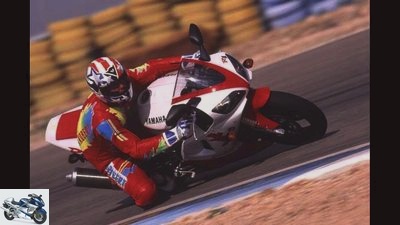
fact
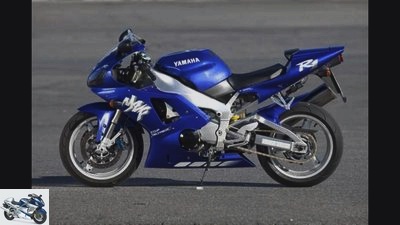
fact
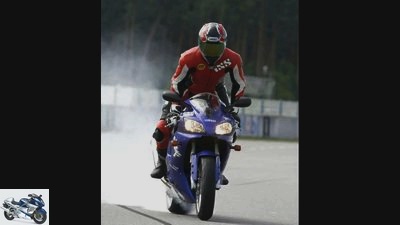
fact
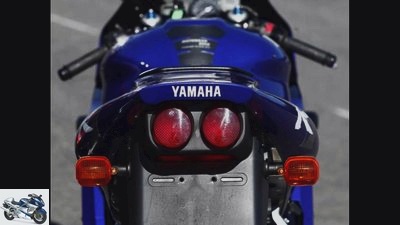
fact
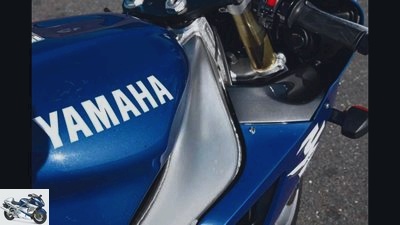
fact
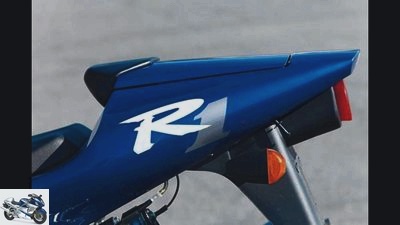
fact
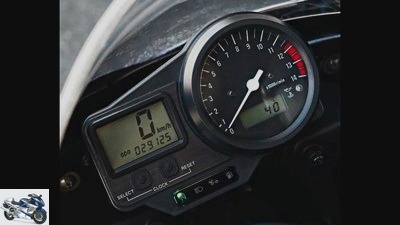
fact
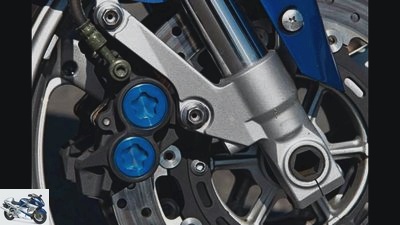
fact
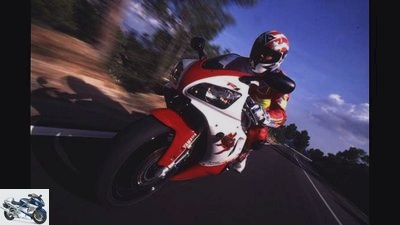
fact
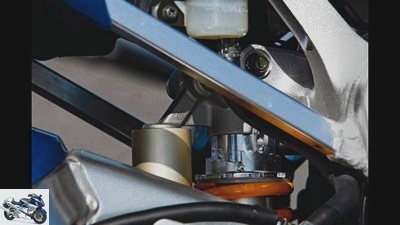
fact
Aprilia RSV4 must move from 50 ?? At 150 km / h, let the old R1 press down on the eye for 1.7 seconds, while a 2009 R1 ran away from its ancestor by just 0.3 seconds in 7.9 seconds. A mighty iron, then, that came on the market in 1998, especially since everything else was right in addition to the price. Her greedy look, the meager 203 kilos live weight and the high-quality workmanship ensured a consistently good sale, so that 25,775 buyers across Germany reached for her in her first ten years.
Suzuki GSX-R 1000
Suzuki GSX-R 1000.




7th photos
Pictures: Honda CBR 900 RR Fireblade SC 28, Ducati 916 SPO, Yamaha YZF-R1 RN01, Suzuki GSX-R 1000 K1 and Aprilia RSV4 Factory
To home page
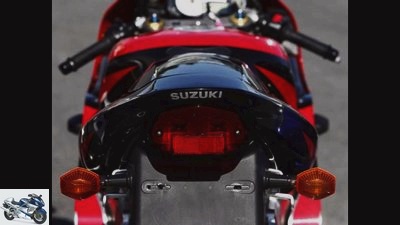
fact
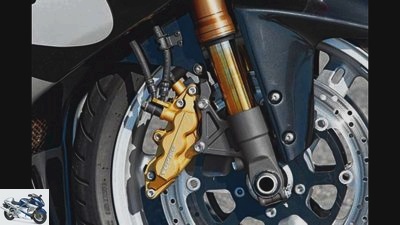
fact
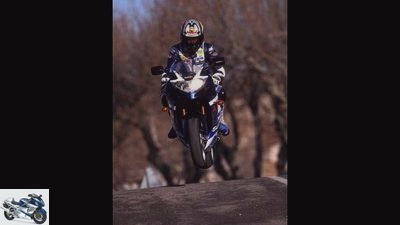
fact
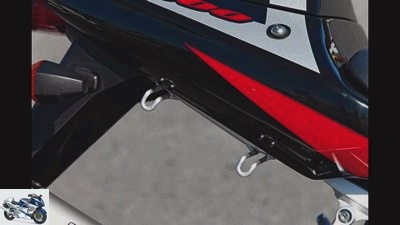
fact
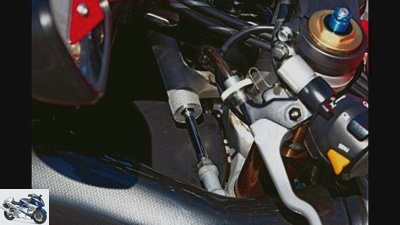
fact
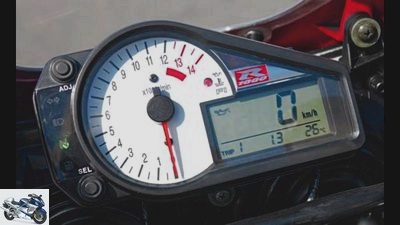
fact
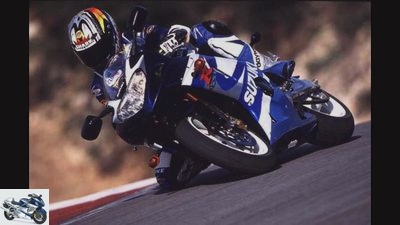
fact
Aprilia RSV4 Factory
Aprilia RSV4 Factory.




8th photos
Pictures: Honda CBR 900 RR Fireblade SC 28, Ducati 916 SPO, Yamaha YZF-R1 RN01, Suzuki GSX-R 1000 K1 and Aprilia RSV4 Factory
To home page
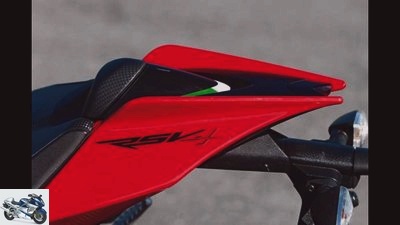
fact
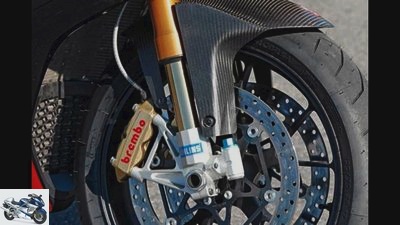
fact
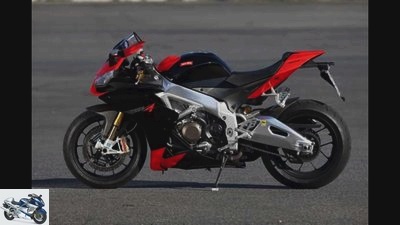
fact

fact
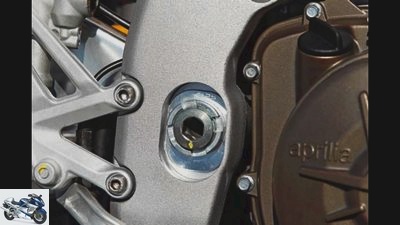
fact
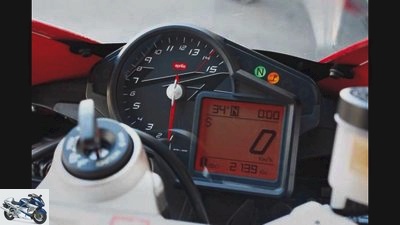
fact
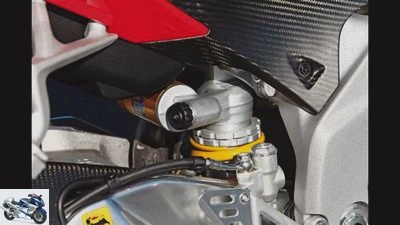
fact
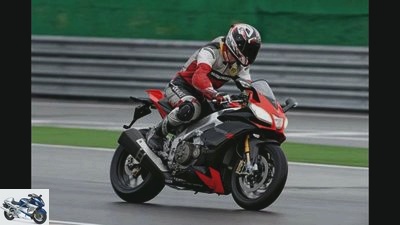
fact
RSV4 Factory definitely has what it takes to become a classic. It is fascinatingly radical and therefore surprisingly independent. Due to its really uncompromising development for racing, it offers handling properties that are currently not offered by any other thousand on the market. If that’s not enough for you, you can delight in their V4 engine concept, which stands out from the Japanese in-line or the Italian twin uniformity. At the moment the manners are still missing a bit, but they should be able to get under control quickly with a model upgrade.
But we stopped at the positive features. There is also the undisputedly fascinating design of the Aprilia. It doesn’t have to please everyone, has nothing to do with a tamburini design, but it conveys the classic Aprilia line perfectly. The central Ram Air opening on the front is reminiscent of the two-cylinder Mille, the compact seating position of the RS 250, and the rear is clearly RSV4. Independent, concise, sexy. After the podium in the second race of the season in Qatar and the first Superbike World Championship victory recently in Brno, the course has been set in terms of sport – we can only hope that this success can also be translated into numbers. It would have deserved it, the RSV4.
Quo vadis, hunter? The rain is still pounding gently against the window, the hunter is tired of hunting. Too many potential prey items buzz in front of the mind’s eye, obscuring the view of the one, very special victim. It is clear that Gixxer and R1 are the better motorcycles. But it is also clear that the original Fireblade and 916 are already a bit closer to the immortal classic and will soon have to be hunted – before there are only a few really good pieces left.
Conclusion: Each of these five motorcycles is something very special. Each of them has achieved a unique position in the motorcycle Olympus in terms of design, lightweight construction, power or a combination of these features. The GSX-R, which is very similar to the YZF-R1, may be a bit out of the ordinary. But it has a completely different, additional attraction – that of the underdog. It is practically the Opel Kadett GSI, which stands against the top dog Golf GTI, alias R1.
Technical specifications
Aprilia RSV4 Factory.
Aprilia RSV4 Factory
Drive: Four-cylinder 65-degree V-engine, 4 valves / cylinder, 132 kW (180 PS) at 12500 / min, 115 Nm at 10000 / min, 1000 cm³, bore / stroke 78.0 / 52.3 mm, compression ratio 13 , 0: 1, ignition / injection system, 48 mm throttle valves, mechanically operated multi-disc oil bath anti-hopping clutch, six-speed gearbox, G-Kat
Landing gear: Light alloy bridge frame, steering head angle: 65.5 degrees, caster: 105 mm, wheelbase: 1420 mm. Upside-down fork, Ø fork inner tube: 43 mm, adjustable in spring base, rebound and compression. Central spring strut with deflection, adjustable in spring base, length, rebound and compression. Suspension travel front / rear: 120/130 mm
Wheels and brakes: Forged alloy wheels, 3.50 x 17"/6.00 x 17", Front tires: 120/70 ZR 17, rear: 190/55 ZR 17. First tires: Pirelli Dragon Supercorsa. 320 mm double disc brake with radially screwed four-piston fixed calipers and radial brake pump at the front, 220 mm single disc with two-piston fixed caliper at the rear
Measurements and weight: Length / width / height: 2050/750/1130 mm, seat / handlebar height: 845/865 mm, handlebar width: 665 mm, 204 kg fully fueled, v./h .: 50.4 / 49.6%
Rear wheel power in last gear: 116 kW (158 PS) at 278 km
Driving performance: Acceleration 0 ?? – 100/150/200 km / h: 3.3 / 5.6 / 8.6 s, torque 50 ?? – 100/100 – 150 km / h: 5.1 / 4.8 s
Top speed: 295 km / h *
Consumption: Fuel type: Super unleaded. Average test consumption: 8.1 liters / 100 km, tank capacity 17 liters, range: 210 km
Base price: 19500 Euro (plus ancillary costs)
Ducati 916
Ducati 916
Drive: Two-cylinder 90-degree V-engine, 4 valves / cylinder, 83 kW (113 PS) at 9000 / min, 90 Nm at 7000 / min, 916 cm³, bore / stroke 94.0 / 66.0 mm, compression ratio 11 , 0: 1, ignition / injection system, 50 mm throttle valves, hydraulically operated multi-plate dry clutch, six-speed gearbox
Landing gear: Steel tubular space frame, steering head angle: 66.0 degrees, caster: 100 mm, wheelbase: 1410 mm. Upside-down fork, Ø fork inner tube: 43 mm, adjustable in spring base, rebound and compression. Central spring strut with deflection, adjustable in spring base, rebound and compression. Suspension travel front / rear: 127/130 mm
Wheels and brakes: Light alloy cast wheels, 3.50 x 17"/5.50 x 17", Front tires: 120/70 ZR 17, rear: 180/55 ZR 17. Test tires: Michelin Pilot Power 2CT. 320 mm double disc brake with four-piston fixed callipers and cast steel discs at the front, 220 mm single disc with two-piston fixed calliper at the rear
Measurements and weight: Length / width / height: 2050/685/1090 mm, seat / handlebar height: 800/820 mm, handlebar width 645 mm, 211 kg fully fueled, front / rear 49.9% / 50.1%
Rear wheel power in last gear: 76 kW (103 PS) at 246 km / h
Driving performance: Acceleration 0 ?? – 100/150/200 km / h: 3.3 / 6.1 / 10.9 s, pulling power 50 ?? – 100/100 – 150 km / h: 6.7 / 6.5 s
Top speed: 254 km / h *
Consumption: Fuel type: Super unleaded. Average test consumption: 7.7 liters / 100 km, tank capacity 17 liters, range: 221 km
Base price: 30,300 DM (including utilities) 1995
Honda CBR 900 RR Fireblade.
Honda CBR 900 RR Fireblade
Drive: Four-cylinder in-line engine, 4 valves / cylinder, 91 kW (128 PS) at 10500 / min, 90 Nm at 8500 / min, 893 cm³, bore / stroke 70.0 / 58.0 mm, compression ratio 11.1: 1, Keihin – Equal pressure carburetor, 38 mm throttle valve, mechanically operated multi-disc oil bath clutch, six-speed gearbox
Landing gear: Light alloy bridge frame, steering head angle: 66.0 degrees, caster: 89 mm, wheelbase: 1405 mm. Telescopic fork, Ø fork inner tube: 45 mm, adjustable in spring base and rebound. Central spring strut with deflection, adjustable in spring base, rebound and compression. Suspension travel front / rear: 120/120 mm
Wheels and brakes: Light alloy cast wheels, 3.50 x 16"/5.50 x 17", Front tires: 130/70 ZR 16, rear: 180/55 ZR 17. Test tires: Michelin Pilot Sport (front), Pilot Power 2CT (rear). 296 mm double disc brake with four-piston fixed calipers at the front, 220 mm single disc with single-piston floating caliper at the rear
Measurements and weight: Length / width / height: 2055/685/1110 mm, seat / handlebar height: 800/900 mm, handlebar width: 645 mm, 207 kg fully fueled, v./h .: 50.7 / 49.3%
Rear wheel power in last gear: 85 kW (116 PS) at 250 km / h
Driving performance: Acceleration 0 – 100/150/200 km / h: 3.2 / 5.3 / 9.3 s, pulling speed 50 – 100/100 – 150 km / h: 5.1 / 5.6 s
Top speed: 256 km / h *
Consumption: Fuel type: Normally unleaded. Average test consumption: 6.8 liters / 100 km, tank capacity: 18 liters, range: 264 km
Base price: 19,750 DM (including utilities, 1992)
Suzuki GSX-R 1000 (K1).
Suzuki GSX-R 1000 (K1)
Drive: Four-cylinder in-line engine, 4 valves / cylinder, 118 kW (160 PS) at 10800 / min, 110 Nm at 8400 / min, 988 cm³, bore / stroke 73.0 / 59.0 mm, compression ratio 12.0: 1, ignition – / injection system, 42 mm throttle valves, mechanically operated multi-disc oil bath clutch, six-speed gearbox
Landing gear: Light alloy bridge frame, steering head angle: 66.0 degrees, caster: 96 mm, wheelbase: 1410 mm. Upside-down fork, Ø fork inner tube: 43 mm, adjustable in spring base, rebound and compression. Central spring strut with deflection, adjustable in spring base, rebound and compression. Suspension travel front / rear: 120/130 mm
Wheels and brakes: Light alloy cast wheels, 3.50 x 17"/6.00 x 17", Front tires: 120/70 ZR 17, rear: 190/50 ZR 17. Test tires: Bridgestone BT 016. 320 mm double disc brake with six-piston fixed calipers at the front, 220 mm single disc with two-piston fixed caliper at the rear
Measurements and weight: Length Width Height; 2045/715/1135 mm, seat / handlebar height: 830/855 mm, handlebar width: 640 mm, 200 kg fully fueled, v./h .: 51.1 / 48.9%
Rear wheel power in last gear: 108 kW (147 PS) at 260 km / h
Driving performance: Acceleration 0 ?? – 100/150/200 km / h: 2.8 / 4.7 / 7.1 s, pulling power 50 ?? – 100/100 ?? – 150 km / h: 4.8 / 4.2 s
Top speed: 287 km / h *
Consumption: Fuel type: Super unleaded. Average test consumption: 7.0 liters / 100 km, tank capacity: 18 liters, range: 257 km
Base price: 24,500 DM (including utilities, 2001)
Yamaha YZF-R1
Yamaha YZF-R1 (RN01)
Drive: Four-cylinder in-line engine, 4 valves / cylinder, 110 kW (150 PS) at 10000 / min, 108 Nm at 8500 / min, 998 cm³, bore / stroke 74.0 / 58.0 mm, compression ratio 11.8: 1, Mikuni – Equal pressure carburettor, 40 mm throttle valves, mechanically operated multi-disc oil bath clutch, six-speed gearbox
Landing gear: Light alloy bridge frame, steering head angle: 66.0 degrees, caster: 92 mm, wheelbase: 1395 mm. Upside-down fork, Ø fork inner tube: 41 mm, adjustable in spring base, rebound and compression. Central spring strut with deflection, adjustable in spring base, rebound and compression. Suspension travel front / rear: 135/130 mm
Wheels and brakes: Light alloy cast wheels, 3.50 x 17"/6.00 x 17", Front tires: 120/70 ZR 17, rear: 190/50 ZR 17. Test tires: Michelin Pilot Power 2CT. 298 mm double disc brake with four-piston fixed calipers at the front, 245 mm single disc with two-piston fixed caliper at the rear
Measurements and weight: Length / width / height: 2095/695/1095 mm, seat / handlebar height: 820/860 mm, handlebar width: 645 mm, 203 kg fully fueled, v./h .: 50.1 / 49.9%
Rear wheel power in last gear: 98 kW (133 PS) at 248 km / h
Driving performance: Acceleration 0 – 100/150/200 km / h: 3.1 / 5.0 / 8.5 s, torque 50 – 100/100 – 150 km / h: 4.0 / 4.2 s
Top speed: 274 km / h *
Consumption: Fuel type: normal unleaded. Average test consumption: 7.1 liters / 100 km, tank capacity 18 liters, range: 253 km
Base price: 21490 DM (plus additional costs, 1998)
* Factory specification
Power / torque diagram
On the test bench, the Suzuki GSX-R 1000 and Yamaha YZF-R1 prove their true strengths clearly visible to everyone: from 4500 rpm their torque plateaus surpass all others. Even the modern, but short-stroke Aprilia RSV4 only manages to generate approximately the torque of the old inline four-cylinder after 10,000 tours. Honda CBR 900 RR Fireblade and Ducati 916 have no chance against the fat big blocks, they are mercilessly driven to the wall. Unfortunately, the graph does not show the velvety responsiveness of the Yamaha and Honda carburettors, they are ahead of the injectors in this discipline.
Related articles
-
Honda Fireblade vs. Suzuki GSX-R 1000 in comparison test
Maccabelli The last four-cylinder without control electronics Test: Honda Fireblade against Suzuki GSX-R 1000 Content of They are the last current…
-
Comparison test of the 1000 super sports car in 2006
fact Comparison test of the 1000 super sports car in 2006 The show must go on The mystery repeats itself. Whenever we think that nothing is going up, the…
-
BMW, Honda, Kawasaki, Suzuki and Yamaha super sports cars in a comparison test
Judd 26th photos Nicolaou 1/26 In the supersports comparison test: Kawasaki ZX-10R, BMW S 1000 RR, Suzuki GSX-R 1000, Honda Fireblade C-ABS and Yamaha…
-
BMW, Ducati, Suzuki and Triumph super sports cars in a comparison test
29 photos 1/29 Triumph Daytona 675, Ducati 848 Evo Corse SE, BMW S 1000 RR, Suzuki GSX-R 750. Different bikes – different cubic…
-
Comparison test: European superbikes
fact 30th photos fact 1/30 European motorcycle manufacturers are known to develop first-class super sports bikes. You can see the special features of…
-
Comparison test: superbikes on the country road
Jahn 23 pictures Aprilia 1/23 Max Biaggi has already achieved some successes in the Superbike World Championship with his Aprilia RSV4. Aprilia 2/23 Aprilia 3/23 …
-
Comparison test: Superbikes 2012
32 pictures 1/32 Yamaha YZF-R1, MV Agusta F4 RR, Kawasaki ZX 10-R, BMW S 1000 RR and Honda Fireblade C-ABS in the super sports car …
-
Ducati 999-1199, Kawasaki Z 1000 and Yamaha YZF-R1 in a comparison test
fact Ducati 999/1199, Kawasaki Z 1000 and Yamaha YZF-R1 Generation comparison – 10 years apart Content of Ten years is a long time when boys become men….
-
Supersport motorcycles in comparison test on the racetrack
Bilski 34 photos Bilski 1/34 Track test super athlete. Bilski 2/34 … The fact that he chose the Suzuki for this high-speed posing speaks for its…
-
A comparison test of dream bikes from the PS editors
Markus Jahn 22nd photos markus-jahn.com 1/22 Two power nakeds and two superbikes form a powerful team. Lively romp as a freestyle. markus-jahn.com 2/22…